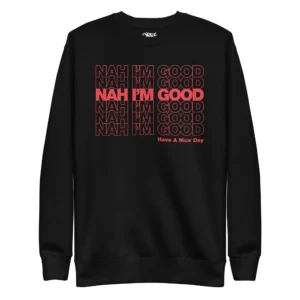The legendary recording session that produced Elvis Presley’s first commercial single, “That’s All Right,” is often viewed as a transformative moment in music history—a point where rock ‘n’ roll was born, altering the musical landscape forever. Scotty Moore, Elvis’s original guitarist, vividly recounted this near-mythical session in interviews, including one with (Guitar Player) magazine in 2009. What’s fascinating about this moment is how it emerged from such casual circumstances, transforming an unplanned jam session into the track that would catapult Presley into stardom. Let’s unpack the dynamics of that session, the impact of the song, and how Moore’s memories provide valuable insight into the creation of a music legend.
A Humble Beginning to a Monumental Recording
It’s difficult to imagine a more inauspicious start to a legendary song than what Scotty Moore described: Elvis “beating the snot” out of his guitar, while Moore and bassist Bill Black simply joined in. According to Moore, Sam Phillips—the owner of Sun Records and the man who would play a key role in Presley’s early career—was intrigued by the impromptu performance and stuck his head out to say, “That sounds pretty good.”
This humble, almost accidental origin story is crucial to understanding the spontaneity and creativity that often drives musical innovation. Rather than sitting down with a clear blueprint for revolutionizing popular music, the trio of musicians was simply having fun, blending their love for various genres like blues, country, and gospel. It was only later, after listening back, that Phillips realized they had stumbled upon something special. This anecdote challenges the notion that musical breakthroughs are always planned, illustrating instead that sometimes the most influential moments in music happen serendipitously.
Scotty Moore’s Contributions: An Underrated Architect of Rock
Moore’s role in the session and in Elvis’s early sound often flies under the radar, but his distinctive guitar playing was foundational to shaping the “rockabilly” style that emerged from Sun Records. With a background in country and jazz guitar, Moore brought a diverse set of influences to Presley’s music. His mixture of fingerpicking and fast, rhythmic strumming provided a dynamic counterpart to Elvis’s vocals and Bill Black’s upright bass, resulting in a sound that was uniquely fresh and energetic.
In “That’s All Right,” Moore’s guitar shines as much as Elvis’s vocals. His improvisational skills were key to the session’s success, and listening to the track now, it’s clear that his playing wasn’t merely accompanying Elvis—it was an integral part of what made the song feel exciting and new. Moore’s solos, filled with clean, twangy tones, echoed the country traditions of Chet Atkins while introducing a grittier edge that came from blues and early rock ‘n’ roll.
By underplaying his own importance, Moore’s recollections demonstrate his humility, yet his influence was undeniable. His ability to blend genres set the tone for much of Presley’s early work, making him an unsung hero of the early rock movement.
The Magic of Sun Records: Sam Phillips’ Vision
Another key figure in this story is Sam Phillips, the visionary behind Sun Records. Phillips had an ear for innovative music and was particularly drawn to the idea of blending white and Black musical traditions. This was evident in his production choices, and the “That’s All Right” session was a perfect representation of Phillips’ ethos. He had been searching for a sound that captured the soul of blues but had crossover appeal to white audiences—a goal that Elvis, Scotty, and Bill inadvertently fulfilled with their spontaneous jam session.
Phillips’ ability to recognize the magic in that rough early take speaks to his talent as a producer. He wasn’t interested in making another straightforward country or blues record—he wanted something different, something that blurred the racial and cultural boundaries of the time. When he heard what Elvis, Moore, and Black were playing, he knew they had captured that elusive quality. Phillips’ role in shaping the sound of “That’s All Right” was as much about his vision as a producer as it was about the musicianship of the band. He encouraged the trio to lean into the raw, energetic sound they had stumbled upon, knowing that this was something the world hadn’t quite heard before.
The Genre-Blending Sound of “That’s All Right”
When analyzing “That’s All Right,” it’s important to consider how the song broke musical conventions of the time. The track borrowed heavily from Arthur Crudup’s original blues composition, yet the way Elvis and the band interpreted it was neither purely blues, nor strictly country. Instead, they created a fusion that became the foundation of rockabilly, which would go on to influence not just rock ‘n’ roll, but pop, country, and even R&B.
Elvis’s vocals in the recording are loose and playful, yet carry an undeniable swagger, indicative of a young artist finding his voice. Meanwhile, Bill Black’s slap bass and Moore’s rhythmic guitar gave the song a driving energy that set it apart from other contemporary recordings. Unlike the crooners and smooth vocalists who dominated the airwaves in the early 1950s, Presley’s performance had a rawness that was irresistible.
Moore’s recollection of the session also highlights how unconsciously revolutionary it was. He, Elvis, and Black weren’t trying to invent a new genre; they were simply playing what felt good. But in doing so, they created a sound that resonated with a generation of listeners who were eager for something that felt authentic, rebellious, and new.
The Mythology of the “That’s All Right” Session
Part of what makes the “That’s All Right” session so fascinating is the mythology that has grown around it. Over time, it has become one of those moments in music history that seems almost too good to be true—a young Elvis Presley, playing around in the studio, unknowingly creating the future of popular music. While Moore’s recounting of the event gives us a more down-to-earth version of the story, it doesn’t take away from the impact that the session ultimately had.
For modern listeners, this story provides a valuable lesson about the nature of creativity. The idea that one of the most important songs in rock history could come from such a casual, almost accidental session serves as a reminder that not every breakthrough is meticulously planned. Sometimes, it’s about being in the right place at the right time, with the right people.
A Defining Moment in Music History
The “That’s All Right” session wasn’t just a pivotal moment for Elvis Presley—it was a defining moment for the future of popular music. Scotty Moore’s guitar work, Sam Phillips’ production instincts, and the synergy between Presley, Moore, and Black all contributed to the creation of something entirely new. Moore’s recollection of the event strips away some of the mythology but also reinforces the importance of spontaneity and experimentation in artistic creation.
In the end, “That’s All Right” endures not just because of what it sounded like, but because of what it represented—a breaking down of musical boundaries, a merging of genres, and a glimpse into the future of rock ‘n’ roll.
No comments yet.







